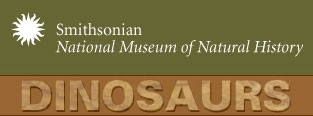The Smithsonian has several new on-line features of interest to readers of the Palaeoblog including an informative listing of its extensive collection of type fossils.
 The Smithsonian Institution is one of the largest museum systems in the world, and has served as a repository for animal, plant, and other natural history specimens since its founding in 1846. Today the National Museum of Natural History houses these collections—totaling over 124 million specimens—in its 1910 building at 10th and Constitution Avenue, Washington, D.C., and in its Museum Support Center in Suitland, MD.
The Smithsonian Institution is one of the largest museum systems in the world, and has served as a repository for animal, plant, and other natural history specimens since its founding in 1846. Today the National Museum of Natural History houses these collections—totaling over 124 million specimens—in its 1910 building at 10th and Constitution Avenue, Washington, D.C., and in its Museum Support Center in Suitland, MD. Among these, many are type specimens, the original and name-bearing specimens for new species. These important materials form a foundation for comparative biology and systematics, because they represent the focal point for the identification and naming of new taxa.
The 40 million specimens in the Paleobiology Department include 250,000 of these types, 46 of which are dinosaurs. These specimens represent only a small fraction of the more than 1000 known dinosaur species, but many are unusually complete and important specimens. In particular, the types of Ceratosaurus nasicornis, Stegosaurus stenops, Camptosaurus browni, and Thescelosaurus neglectus are among the finest specimens known for these dinosaur species.
Click to visit: GEOLOGIC TIME: THE STORY OF A CHANGING EARTH, DINOSAURS!. or LIFE OF A VERTEBRATE FOSSIL.
